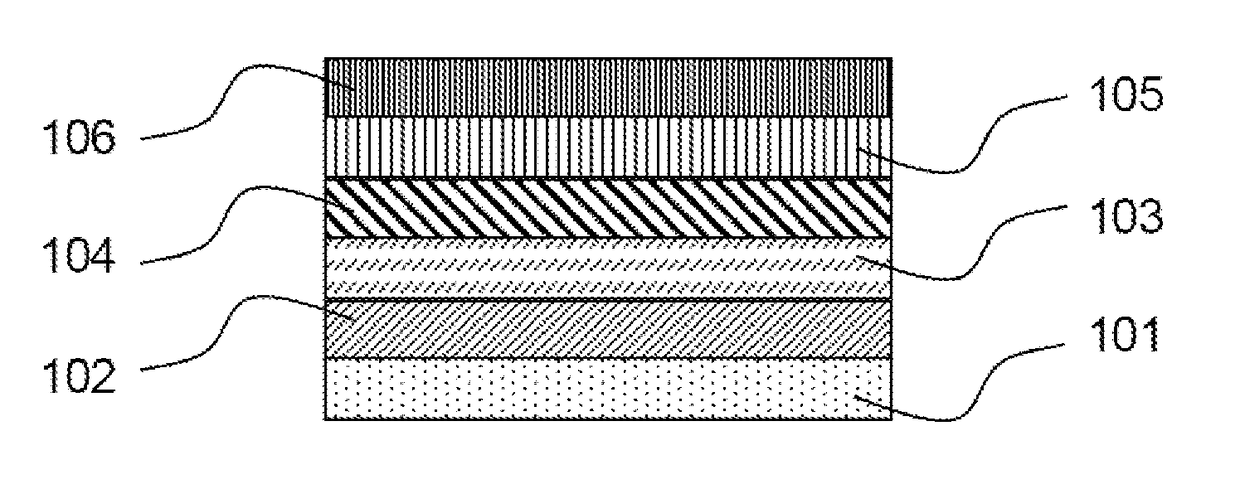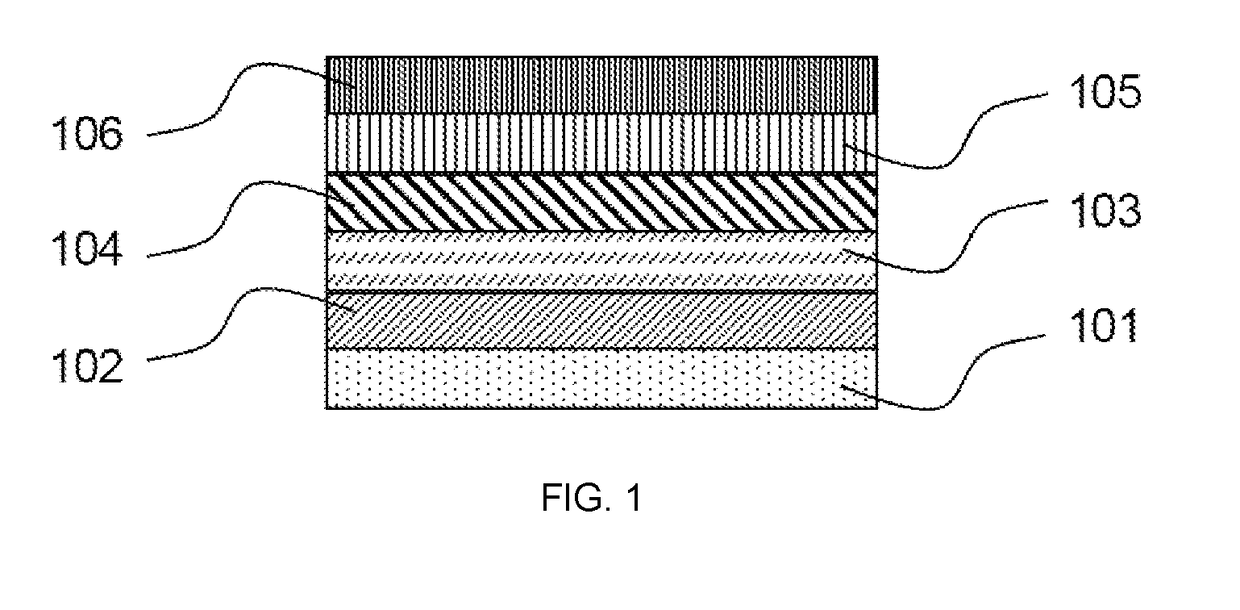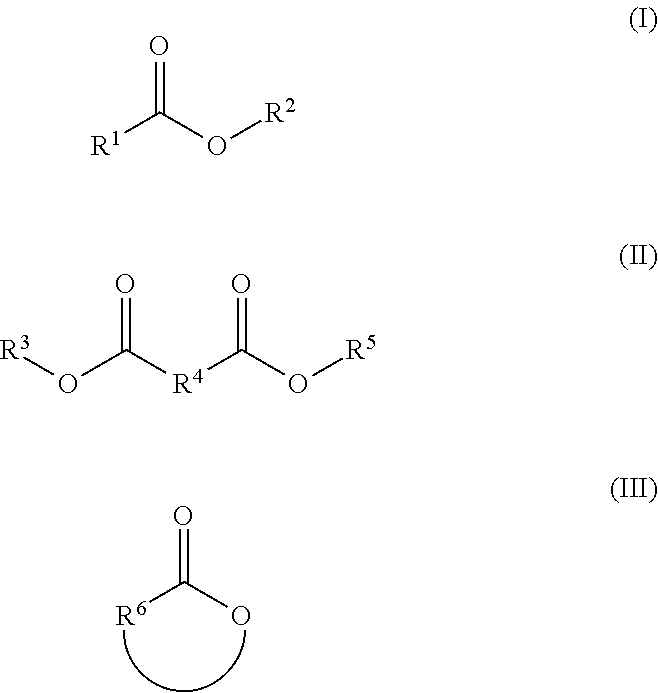Printing ink and electronic device
a technology of electronic devices and inks, applied in the field of printing inks, can solve the problems of limiting the wide application of optoelectronic devices in an area, reducing the charge transportation capacity of films, etc., and achieves the effects of reducing the cost of printing
- Summary
- Abstract
- Description
- Claims
- Application Information
AI Technical Summary
Benefits of technology
Problems solved by technology
Method used
Image
Examples
embodiments
Embodiment 1: Preparing a Blue Light Quantum Dot (CdZnS / ZnS)
[0107]Weigh 0.0512 g S and an amount of 2.4 mLODE before putting in to a 25 mL one-necked flask, then place the flask into an oil pan before heated to 80° C. to dissolve the S, standby, hereinafter it is referred to solution 1; Weigh 0.1280 g S and an amount of 5 mLOA before putting into a 25 mL one-necked flask, and then place the flask into an oil pan before heated to 90° C. to dissolve the S, standby, hereinafter it is referred to solution 2; Weigh 0.1028 gCdO and 1.4680 g zinc acetate, and an amount of 5.6 mL OA, before putting into a 50 mL three-necked flask, then place the three-necked flask in a 150 mL heating mantle, while plugging both necks with two rubber plugs, and a condenser is connected above, the flask is then connected to a double-tube, before heated to 150° C., and evacuated for 40 minutes, and then purged with nitrogen. Using a syringe to add 12 mL ODE into the three-necked flask, before heated to 310° C....
embodiment 2
Green Light Quantum Dot (CdZnSeS / ZnS)
[0109]Weigh 0.0079 g Se and 0.1122 g S before putting into a 25 mL one-necked flask, and an amount of 2 mL TOP, purged with nitrogen, stir and standby, thereafter it is referred to solution 1; weight 0.0128 g CdO and 0.3670 g Zinc acetate, and an amount of 2.5 mL OA before putting into a 25 mL three-necked flask, while plugging both necks with two rubber plugs, and a condenser is connected above, the flask is then connected to a double-tube, followed by placing the three-necked flask into a 50 mL heating mantle, evacuated and purged with nitrogen, before heated to 150° C., and evacuated for 30 min, injected with 7.5 mL ODE, and heated to 300° C., followed by injecting rapidly 1 mL solution 1, count for 10 min; stop the reaction right after 10 min, and place the three-necked flask into water for cooling.
[0110]Add 5 mL n-hexane into the three-necked flask, then transfer the mixture in the three-necked flask into a plurality of centrifuge tubes of 1...
embodiment 3
Red Light Quantum Dot (CdSe / CdS / ZnS)
[0111]Add 1 mmol CdO, 4 mmol OA and 20 mL ODE into a 100 mL three-necked flask,
[0112]purge with nitrogen, heat to 300° C. and a precursor of Cd(OA)2 is formed. At such a temperature, inject rapidly 0.25 mL TOP with 0.25 mmol Se powder dissolved. React for 90 seconds at such a temperature, a reaction solution grows for a about 3.5 nm CdSe core. Add 0.75 mmol octylmercaptan into the reaction solution by drops at a temperature of 300° C., react for 30 min and a CdS shell with about 1 nm thickness is grown. Followed by adding 4 mmol Zn(OA)2 and 2 ml TBP with 4 mmol S powder dissolved into the reaction solution by drops, to grow a ZnS shell (about 1 nm). The reaction lasts for 10 minutes before cooling to a room temperature.
[0113]Add 5 mL n-hexane into the three-necked flask, then transfer a mixture in the three-necked flask into a plurality of centrifuge tubes of 10 mL, add acetone to produce a precipitate, and centrifuge. Take the precipitate and rem...
PUM
 Login to View More
Login to View More Abstract
Description
Claims
Application Information
 Login to View More
Login to View More - R&D
- Intellectual Property
- Life Sciences
- Materials
- Tech Scout
- Unparalleled Data Quality
- Higher Quality Content
- 60% Fewer Hallucinations
Browse by: Latest US Patents, China's latest patents, Technical Efficacy Thesaurus, Application Domain, Technology Topic, Popular Technical Reports.
© 2025 PatSnap. All rights reserved.Legal|Privacy policy|Modern Slavery Act Transparency Statement|Sitemap|About US| Contact US: help@patsnap.com



